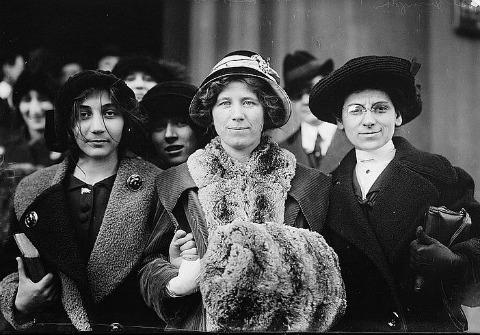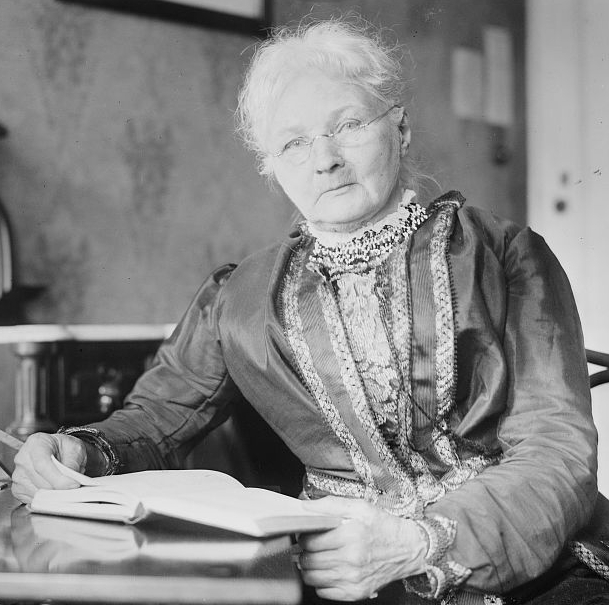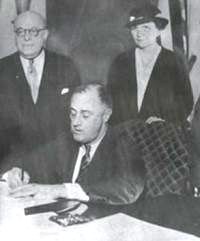
Credit: Wikimedia Commons
It’s no secret that women were largely absent from public service in the first half of the 20th century. Hell, women weren’t even federally granted the right to vote, until 1920. But even with a million sexist constraints, motivated women in the quickly-changing social scene of this era took action and made shit happen.
Here's how:
1. Women’s clubs and the Pure Food and Drug Act of 1906
After Upton Sinclair’s 1906 expose of the Chicago meatpacking industry (“[I]t was the custom whenever meat was so spoiled that it could not be used for anything else, either to can it or else to chop it up into sausage. . .”), it was the members of the General Federation of Women’s Clubs (a still existent international women’s organization for community improvement) who spearheaded a massive safety campaign that led to Congress’ passage of the Pure Food and Drug Act of 1906. The law prohibits sale of misbranded or adulterated food, and provided a first step toward the creation of the Food and Drug Administration. If you like lead-free candy and untainted canned goods, you should be grateful for the FDA . . . and for the General Federation of Women's Clubs.
2. Mother Jones and the Fair Labor Standards Act of 1938

Typically clad in black dress with lace collars, the five-foot tall Mary Harris “Mother” Jones was once labeled "the most dangerous woman in America" by a U.S. district attorney for her work in organizing for worker rights. Some of her most important work was in the realm of child labor laws. In 1903 the white-haired lady provided front-page news stories for an entire summer by striking for children's rights. She started off by leading hundreds of children on a march from Pennsylvania textile mills to President Theodore Roosevelt’s home in Long Island, New York.
For months following this display, she and a few dozen children—some of whom had been injured by mill machinery—walked to a new town each day and staged rallies drawing thousands of citizens. Her dramatic actions spurred the anti-child labor movement, and ultimately prompted Congress to pass the 1938 Fair Labor Standards Act, which banned oppressive child labor. It's a shame it took more than 30 years, but better late than never.
3. Frances Perkins and The Social Security Act of 1935 
Francis Perkins was both the first woman to hold a cabinet position in the U.S. and the nation’s longest-serving Secretary of Labor (and she defended in court her right to keep her maiden name after she married; apparently scandalous at the time). She put her nose to the grindstone helping to bang out major New Deal policies to alleviate the massive poverty of the Great Depression.
Her most prominent act in public service was probably as the chief architect of the Social Security Act of 1935, which FDR called “the cornerstone of his administration.” And though financing of Social Security has taken on an almost iconic status in presidential campaigns ever since, this provision keeps millions of Americans out of poverty, and provides protection from financial disaster if a family loses its primary income-earner due to retirement, disability, or death.
Hat tip to these intrepid ladies who helped transform American life from horrific to downright liveable.






